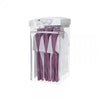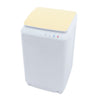Conventional septic systems typically discharge wastewater through an underground drainage field. However, many homeowners, particularly in areas with clay soils, have septic systems that discharge wastewater into surface water, such as a drainage ditch. For example, there are approximately 140,000 such systems in Illinois. In these types of systems, wastewater from the home goes into a concrete or plastic tank that has some type of compressor. The compressor pushes air through the water to provide oxygen for aerobic bacteria to decompose the organic material. After some solids settle to the bottom of the tank, wastewater then flows through a chlorine tablet dispenser to kill any remaining bacteria before it’s discharged out a pipe into a waterway or creek.
But these types of systems must be maintained and that’s where the problems start.
Many people are either not keeping up with the maintenance of the mechanical system or they’re not putting the chlorine in correctly.” For example, some people are adding too many chlorine tablets, thinking that “more is better.” But doing this can cause the chlorine dispenser to clog, defeating its purpose of killing bacteriain wastewater.
As a result, the system fails and the liquid waste that is discharged may contain raw sewage not visible to the untrained eye. Disease-causing organisms in the sewage can result in dysentery, infectious hepatitis, typhoid or other diseases.
Additionally, any pooling discharge from a failing system is a temptation to children or animals in the area. They can be infected by direct exposure or they can transport disease-causing organisms back to their homes. This stagnant water, with its high levels of organic material, also provides a fertile breeding ground for mosquitoes identified as the primary carriers of the West Nile virus in Illinois.
The surface discharge system is often the only viable option for homeowners who live in a geographic region where the soil has high clay content. The space between clay soil particles is too small to allow for adequate infiltration, making a subsurface discharging system ineffective.
One way to help prevent this problem is by scheduling regular checkups. The installer can come out periodically to check the system and make sure it’s working, as these systems do work if they’re maintained properly.”
As you may know from researching this topic, failing Septic Tanks are a major financial and environmental problem in this country. Expensive septic repairs can often run from $5,000 to $20,000 or more and a large number of systems are failing throughout the country. For news stories related to failing Septic Tanks and tightening regulations you can go to:
http://www.laundry-alternative.com/failing-septic-systems/regulations/
You also can’t sell your home if it has a failing system. For more information on how to properly maintain your Septic Tank, go to: http://www.laundry-alternative.com/septic-system-maintenance/













